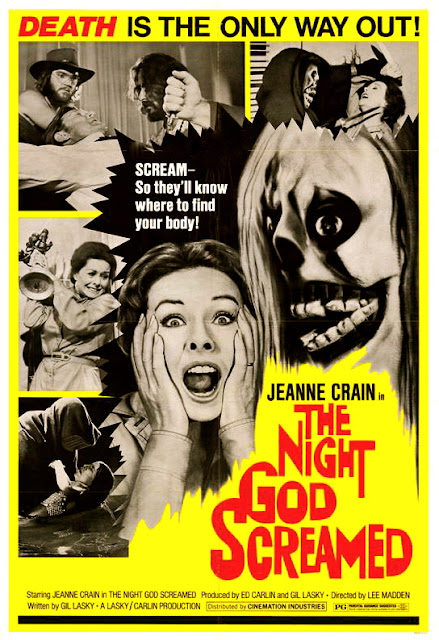Less than a year after the
release of Jaws (1975), William
Girdler’s wonderfully silly Grizzly
(1976) imposed the killer-shark formula onto the story of a killer bear—though
another movie released the following year snagged the low-hanging fruit of the
obvious ripoff title Claws. Produced
on a sketchy budget and weighed down by a clumsy structure involving repetitive
flashbacks, Claws should be pure
cheesetastic fun, but it lacks the gonzo energy that makes Grizzly so enjoyable. So even though Claws hits many of the cartoonish notes one might expect, such as
an attack on a campsite and a wizened Native American character, the picture is
schlocky and sluggish. After a violent prologue during which a bear is wounded
by lawbreaking hunters in the Alaskan wilderness, the picture cuts ahead five
years, when new attacks suggest the infamous “Satan Bear” has returned. This
pointless time jump fragments the storyline and forces the filmmakers to employ
flashbacks as a means of delivering backstories for various one-dimensional
human characters. All of this narrative housekeeping dulls the impact of the
bear-attack scenes. Eventually, the story focuses on frontiersman Jason Monroe
(Jason Evers), who was mauled by the “Satan Bear” in the past and now wants
revenge. This prompts melodrama involving his wife and child, who resent the
way Jason devotes all his energy to his obsession. The picture also has the
requisite college kids conducting a research survey, pitting those who want to
capture the killer grizzly against those who want the animal destroyed. Things
pick up toward the end, but it’s a case of too little, too late. Furthermore,
the distracting shoddiness of the filmmaking is epitomized by this
head-scratcher of a dialogue exchange. Park commissioner to hippie: “Are you
sure it was a bear?” Hippie: “Hey, man, I’m a rock singer, not Walt Disney.”
Huh? Claws is hardly the worst
low-budget creature feature ever made, but Grizzly
scratches the exact same itch in a much more satisfying way.
Claws:
LAME
















